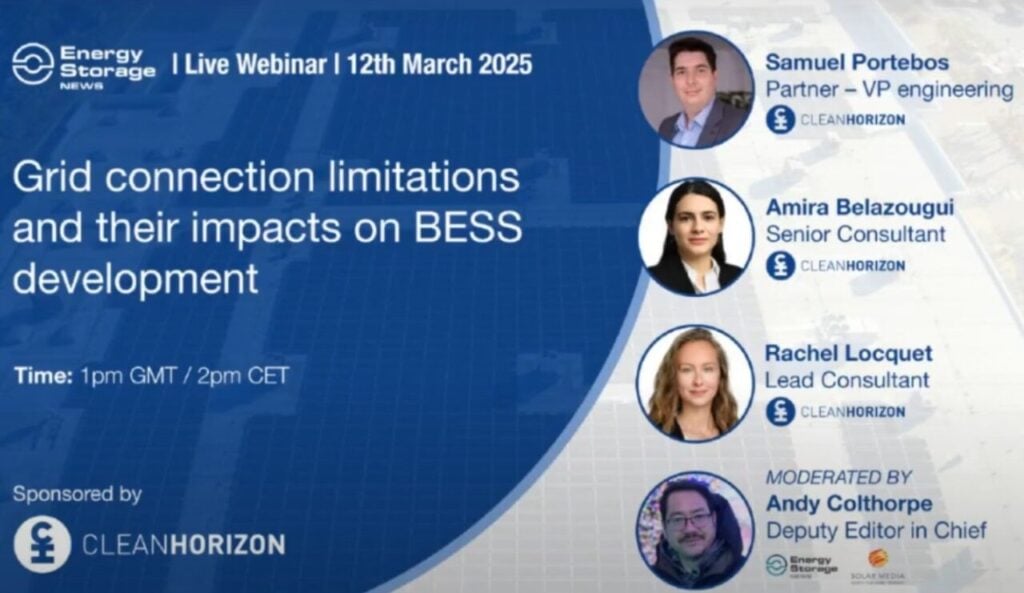
Energy-Storage.news proudly presents our sponsored webinar with Clean Horizons on the impacts of grid connection limitations on battery energy storage system (BESS) development.
One of the main limiting factors for BESS development in Europe is the access to the grid. Indeed, with large amounts of renewable projects being deployed, the grids accommodation capacity is reaching saturation in almost all European countries.
Enjoy 12 months of exclusive analysis
- Regular insight and analysis of the industry’s biggest developments
- In-depth interviews with the industry’s leading figures
- Annual digital subscription to the PV Tech Power journal
- Discounts on Solar Media’s portfolio of events, in-person and virtual
Or continue reading this article for free
Finding the correct grid connection option for a BESS project is therefore on the critical path of any BESS developer, typically with an even stronger priority than finding a suitable land plot.
As grid connection requests multiply, grid operators tend to propose flexible grid connection options, in which the grid operator has the right to temporarily constraint the charge or discharge capability of the BESS. These flexible connection offers are a positive step towards BESS deployment, as they largely increase the number and capacity of grid connection points available to connect a BESS.
However, these flexible options also create more complexity in terms of project development, as :
- Information provided by the grid operators are usually partial, and provide only a number of hours during which the grid connection can be unavailable to charge and discharge.
- The scenarios considered by grid operators are often maximal ones, aiming at determining the upper bound of the limitations to which the project can be subject to.
- The grid limitations are stochastic by nature, as they are caused by either demand variations, renewable intermittency or equipment failure on the grid infrastructure.
- The evolution of these limitations is uncertain and highly dependent on the future grid upgrades.
All these factors make the analysis of a given project much more difficult. The objective of this webinar is to provide possible solutions to these uncertainties. In particular, the webinar tackles the following topics:
- What are the causes for limitations, and how can these limitations be anticipated through publicly available data.
- How to build a realistic limitation scenario to be considered in a business model
- What is the impact of a given number of limitations on a project’s profitability
- How does the presence of limitations in a given project be contemplated in the agreement with the Route to Market provider.
Clean Horizon’s expert team shares its observations and industry best practices used to continue developing storage projects despite this additional complexity.
Speakers:
Samuel Portebos, partner and VP for engineering at Clean Horizon
Rachel Loquet, lead consultant at Clean Horizon
Amira Belazougui, senior analyst, Clean Horizon
Andy Colthorpe, editor of Energy-Storage.news and deputy editor-in-chief for publishing at Solar Media, is the moderator.
See the webinar on YouTube below. You can also register to watch the webinar from the on-demand section of our website, where you can also find all our other Energy-Storage.news webinars.

